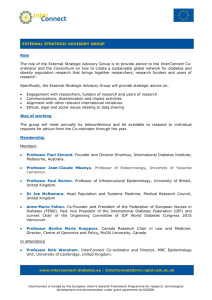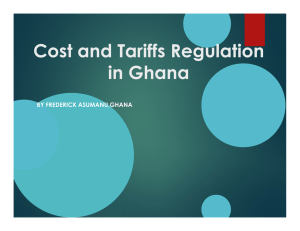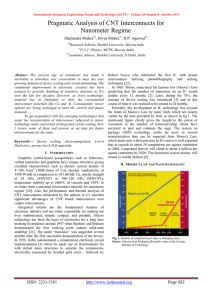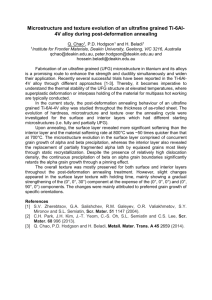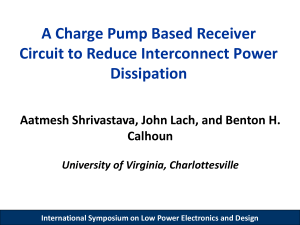Supporting Info
advertisement
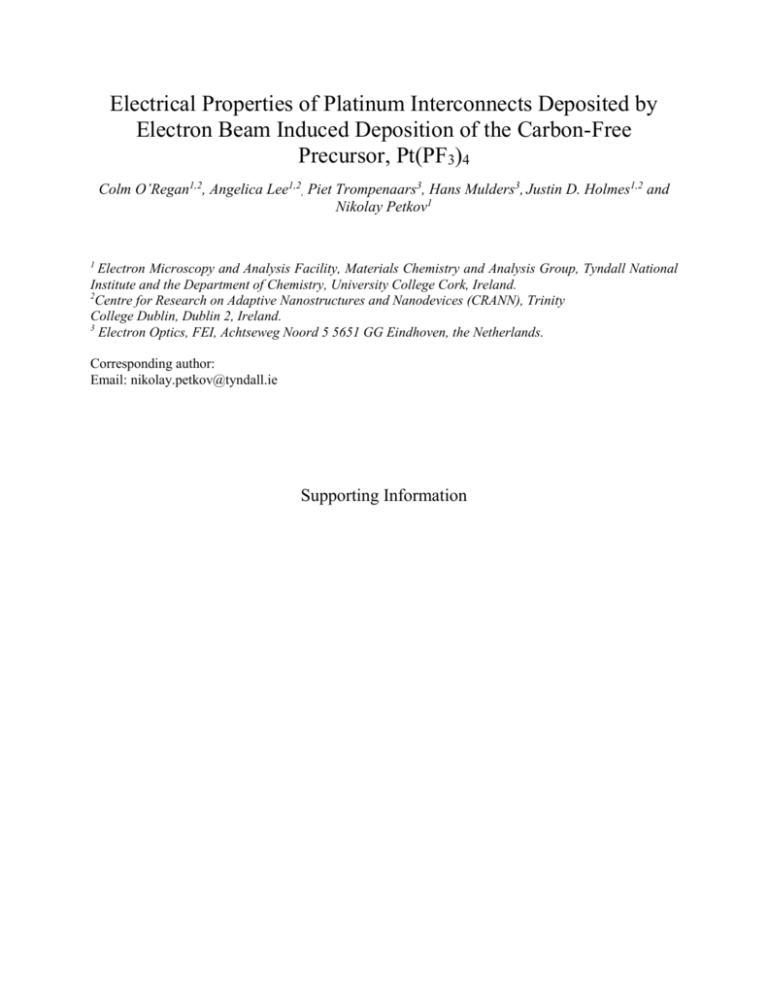
Electrical Properties of Platinum Interconnects Deposited by Electron Beam Induced Deposition of the Carbon-Free Precursor, Pt(PF3)4 Colm O’Regan1,2, Angelica Lee1,2, Piet Trompenaars3, Hans Mulders3, Justin D. Holmes1,2 and Nikolay Petkov1 1 Electron Microscopy and Analysis Facility, Materials Chemistry and Analysis Group, Tyndall National Institute and the Department of Chemistry, University College Cork, Ireland. 2 Centre for Research on Adaptive Nanostructures and Nanodevices (CRANN), Trinity College Dublin, Dublin 2, Ireland. 3 Electron Optics, FEI, Achtseweg Noord 5 5651 GG Eindhoven, the Netherlands. Corresponding author: Email: nikolay.petkov@tyndall.ie Supporting Information Figure S1. 2- and 4-point I-V measurements of a liquid Pt precursor which suggest negligible contact resistance due to identical slopes. Figure S2. Cross-sectional TEM image of a carbon-free interconnect before annealing outlining the nominal area (in white) of the interconnect set to 4000 nm2 and the actual cross-sectional area of the interconnect (in red) that is estimated to be 6000 nm2. The latter is used to calculate the “true” resistivity of the material instead of the widely used nominal cross-sectional area. Figure S3. I-V measurements of Pt interconnects before and after annealing in forming gas (H2/Ar). Right (red) Y axis corresponds to current values after annealing. Top and bottom insets in both show Pt wire before and after annealing respectively. Scale bar for insets is 3m. (a) I-V curve for standard Pt interconnect before and after annealing under H2/Ar for two minutes. (b) IV curve for liquid Pt interconnect before and after annealing under H2/Ar for two minutes. Figure S4. SEM micrographs of (a) standard platinum interconnect and (b) liquid Pt interconnect after annealing in nitrogen gas for 1 minute. Figure S5. SEM micrograph of a liquid Pt interconnect deposited on Au/Ni contact pads for EDX analysis. Points 1 and 2 represent the locations of the EDX scans which were taken on both the carbon-free and standard Pt interconnects. Point 1 represents the interconnect while point two is the underlying substrate. The EDX data is given in Table 1 and 2 below. Table 1. C/Si atomic ratios before annealing for corresponding Pt interconnect devices and the nearby substrate. The measurements are done on the same chip. Table 2. C/Si atomic ratios after N2 annealing for corresponding Pt interconnect devices and the nearby substrate. The measurements are done on the same chip. Figure S6 (a). SEM micrograph of a carbon-free interconnect deposited on Au/Ni electrodes after additional annealing at 120 oC for 60 minutes under atmospheric conditions. Inset shows the area highlighted in the red box and illustrates the formation of phosphorous clusters (shown by white arrows) along the length of the interconnect. Figure S6 (b). EDX spectrum of the cluster highlighted by the red arrow in (a). The analysis confirms the presence of phosphorous in the clusters. The nickel peaks are from the sample holder in the SEM.
